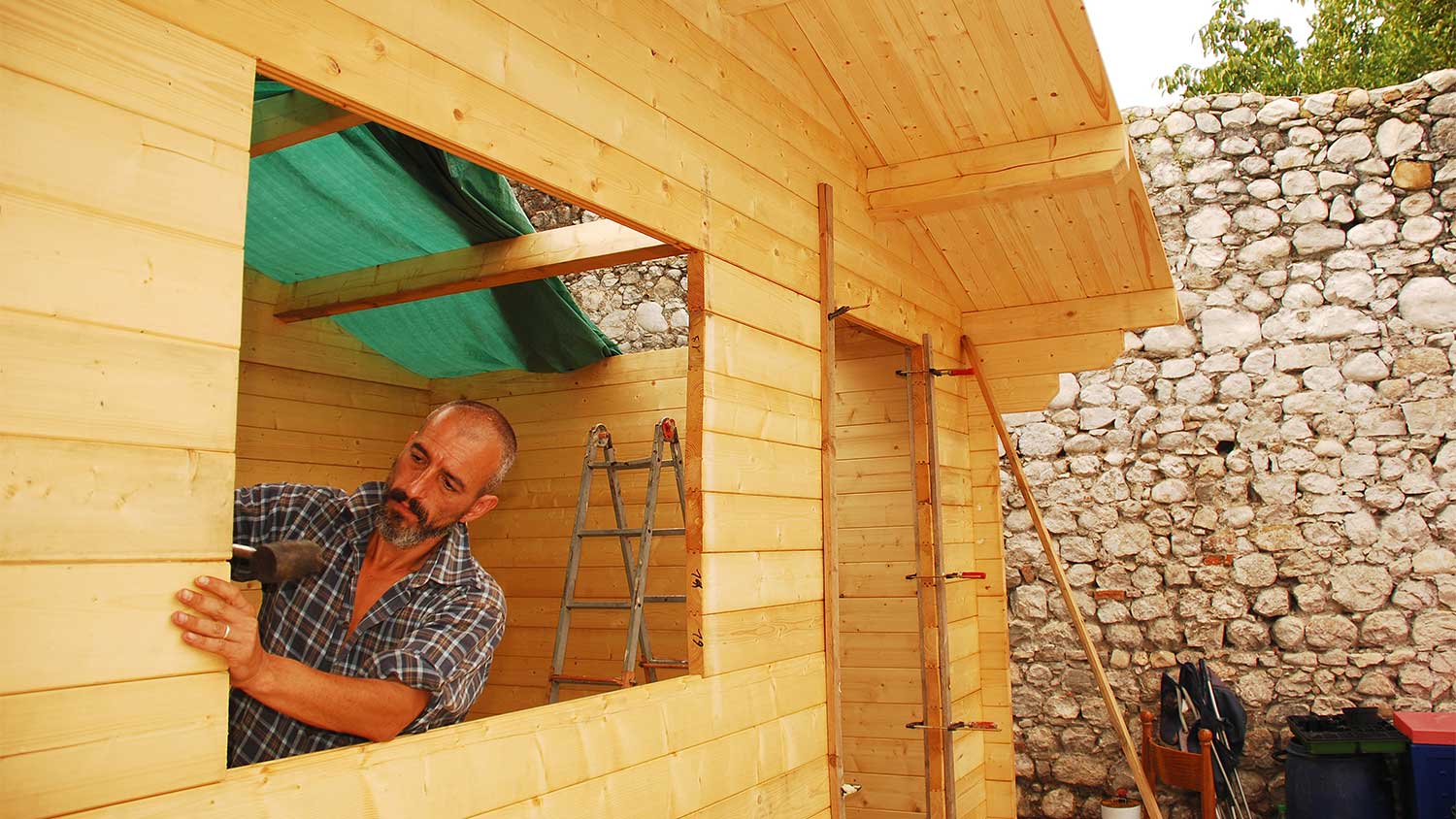
The cost to convert a vaulted ceiling to a second floor depends on factors such as its size, intended function, materials, and the project's complexity.
Learn to cut glass in a snap


Cutting glass might sound intimidating, but with a little practice you can go from beginner to confident DIYer in a day. The cost of having a pro cut glass for you can be relatively high, adding as much as $100 for each glass pane to your project. So, doing the work yourself can mean big savings for your project.
The biggest hurdle for cutting glass may be feeling confident in your own ability. If it’s your first time, we recommend finding some scrap glass pieces to practice on before you jump into cutting the new glass for your DIY project. With the right safety precautions and a little practice, you’ll be able to cut glass in a snap.
For this project, you’ll want to choose a sturdy flat surface with a large workspace. Next, pad the table so you have some cushioning while you work to protect the glass and the work surface. You can use a work blanket or any similar padding.
When working with glass, be cautious of potentially sharp pieces and splinters, especially along the edges of the glass. Proceed with caution and wear protective equipment like work gloves and safety glasses.
Once your workstation is set up and ready to go, you’ll want to clean the glass pane with a glass cleaner. Make sure to focus on the area where you want to make your cut. This will help the glass cutting tool slide, and make scoring the glass easier.
Place the glass flat on your work surface and measure the pane to the dimensions for your project. Mark one or two spots lightly with a marker so you can see where you’ll place your cut line. Make sure to use a marker that will wash off easily later.

Once your markings are complete, you’ll want to lubricate your glass cutter with glass cutting oil. You don’t need much—just enough so the cutting wheel can move freely. Keep in mind, though it’s called a glass cutter, this tool is actually used to score the glass rather than cut all the way through it.
To score the glass, you’ll want to use your straight edge to make a straight line that fits your measurements. Angle the glass cutter slightly up and use it to score toward you, using an even amount of pressure across your cut. For the best results, you’ll want to make the cut in one continuous smooth movement.
If needed, you can repeat this process for a deeper cut, but using only one cut is preferable to avoid splintering when you snap the glass. If you’re cutting thick glass, you may wish to score both sides of the glass to ensure a clean break. Getting a clean score is important so that when you snap it, the glass breaks with a straight cut. This will help you avoid having to replace your glass or fix cracks in the glass.
There are several methods for snapping glass along a score line. The method you choose might depend on your comfort and the size of the piece of glass you are removing.
One method is to snap the glass along the edge of your work surface. To do this, support both sides of the glass pane and line up the edge of your table to the score line. Make sure the glass you’re removing hangs over the edge of your work surface, and that the score mark is facing upward. Hold the glass pane firmly against the table and snap the overhanging glass downward so it breaks along the score line.
It might feel easier to snap the glass with it placed on a flat surface. For this method, place a thin piece of wood at the edge of the glass under the score line. Once in place, push down evenly and firmly on both sides of the glass pane to snap the glass. If the glass doesn’t break completely, you can rotate your hands outwards to separate it. Or, move the wood to the other side of the score and repeat the process.
This third technique is best for removing small sections of glass like edge strips, or trimming glass edges. Depending on the size of the glass pane, you can hold the glass against a table for support. For smaller pieces, you can support it with your opposite hand. Use a pair of glass pliers to grip the piece of glass you want to remove. Then, firmly snap the pliers down and away from you to remove the glass.
To finish up, you’ll want to trim off any jagged pieces with your glass pliers. You can do this by grasping the piece you are removing with the pliers and snapping it down and away from your body. This is similar to the third technique described above.
Once you’re done cutting, use a fine grade of sandpaper or a sharpening stone to smooth out any rough edges on the cut line. Sanding edges will help avoid unexpected injuries and make the glass safer to handle while you complete any DIY projects.
From average costs to expert advice, get all the answers you need to get your job done.

The cost to convert a vaulted ceiling to a second floor depends on factors such as its size, intended function, materials, and the project's complexity.

Discover the cost to build a workshop. Learn about price ranges, key cost factors, and ways to save on your new workspace project.

The cost to build a root cellar depends on size, location, materials, and other variables. Our guide will help you decide which option is best for you.

Discover the cost to build a modern-style home, including average prices, key factors, and tips to help you plan your project with confidence.

Looking to compare a mobile home vs. a tiny home? Here, we share the significant differences, including the best lifestyles for each home type.

Discover how much it costs to build a Victorian house. Explore average prices, key cost factors, and tips to plan your dream Victorian home.